The Passo Stelvio: A Journey to Awesome
"Stelvio Day" removes autos for 12 hours on one of the most epic passes in Italy, making for an incredible day of cycling
The Stelvio Pass rises out of the earth like a coiled serpent, taunting every cyclist with its 48 merciless switchbacks - each one a test of will, ego, and the very concept of “awesome.” Tucked deep in the Alps where Italy, Switzerland, and Austria meet, its 1,875 meters (5900’) of vertical ascent has captured the hearts of cyclists for generations. It’s a training ground for pro teams, a backdrop for countless decisive Giro d’Italia stages, and a goldmine of Instagram-worthy moments. Simply put, it’s a cycling bucket-list item, forever etched in the annals of pedal-powered legends.
There’s just one problem. It’s also a playground for tourist buses, motorcycles, and autos, mostly driven by Italians. Imagine a fleet of Fiats and camper vans circling like caffeinated hornets, drivers yelling out the window with animated hand gestures, expressing that uniquely Italian mix of disbelief and exasperation. With all that emotional urgency, you’d think they were on a life-saving mission - though we know all that awaits them is a lukewarm espresso and an argument about football. Throw in a simultaneous unsanctioned MotoGP event, with Marc Marquez wannabes revving their engines and testing sideview mirror impact ratings with every overtake, and you’ve got a recipe for disaster. Needless to say, not ideal for cyclists.
But once a year, the cycling gods smile upon us. “Stelvio Day” arrives - 12 glorious hours of motor-free bliss, sponsored by the National Parks on either side. Over 10,000 cyclists, hikers, and mountain runners gather to own the mountain, without the usual chaos of combustion engines. I was all in, hoping to tackle both sides of this iconic pass.
The Passo Stelvio is about a seven-hour drive from my home in Vienna, and I eagerly anticipated the solo trek through the Alps. Lately, I’ve been experimenting with what the kids now call “raw dogging the drive” - no music, no podcasts, for hours on end. Just me, the hum of tires, and the scenery. It’s all the rage with the young stoics, apparently. The older I get, the more I appreciate the silence, and its rich construct for digging deep into the roots of personal motivation. Something about the quiet invites the kind of introspection you normally only get from a 4-year-old asking endless “why” questions - why is the sky blue? But why? Why that? And why, and why, and why again, until you snag a bit of truth, pull hard, and fully unravel the house curtain shielding the simple maze within.
By the time I rolled into Glorenza, Italy, I felt mentally and spiritually cleansed. No emo-baggage for big Stelvio! I was so excited that the next morning, I was suited up at 5 a.m., sipping espresso on the windowsill, waiting for the sun to peek over the hills. My mind wandered to the word “awesome” - a word I use way too often as a West Coast American, but one that seemed especially apt. Awesome is that rare cocktail of admiration, respect, and fear that shakes our very sense of life’s scale. It’s that blue dot moment - the one that reminds you of your insignificance against the eons, the mountains that stood before we were single-celled organisms, or that whisper from the divine (however you interpret it) telling you you’re part of something much bigger. You only need a millisecond of that feeling to reset years of ego-driven nonsense.
Today felt like it could deliver just that. The anticipation was physically palpable - or maybe those three espressos were kicking in. As the first rays kissed the mountain tops, cyclist headlights converged from every alley toward the main bike path. It was time. I joined the pilgrimage to Prad, at the base of the Passo Stelvio.
I wasn’t alone in thinking an early start was wise. The bike path filled with hundreds of cyclists—mountain bikes, eBikes, trailers with kids, cyclists young and old, with at least six languages in the air at any given moment. It was OUR day, and the vibe was electric. The air was cool, misted by the river, and the pace was just slow enough to savor it all.
I had no idea how long the climb would take. The pros can conquer the pass in about 1 hour and 10 minutes, which meant at least double that for us mortals. Most online estimates suggested 2.5 to 3 hours. I wasn’t in a rush—this wasn’t a race, after all—so I planned on leisurely stops along the way, trusting that any small Italian town could provide sustenance if needed. I figured 2.5 hours per side and a full day of eight hours total on the bike.
The climb started out fun and mildly challenging, with grades between 8-10%. The first couple of turns - 48 and 47 - came quickly, but then it was 15 minutes before the next. I was thankful for the perspective. About two-thirds of the way up, I saw what I can only describe as “the wall” - the final 15 hairpins in the morning sunlight. It looked relentless. But before I could contemplate my impending doom, I found salvation at Turn 10 - an espresso and snack station from sponsor BuyCycle. How civilized!
I reached the summit in about two hours, fast enough that most stores were still closed. I layered up and headed down the other side toward Bormio. A few fast Italian cyclists, their thighs Michelangelo-worthy, motioned for me to join their pace line. I happily obliged, chirping my disc brakes through each turn.
As we descended, I marveled at the number of people still climbing the other way. The four of us had to skid to a stop more than once, amidst a flurry of hand waves and “Scusi”s from dodging climbers who hadn’t expected a descending train just yet. Once we cleared the masses, the line down the mountain opened up. Miles stretched ahead of us, a tan speck of town growing with each tunnel we passed. The Alps stood as primordial witnesses, indifferent to our carbon-based ambitions, while the universe above spun on in a dance of dark matter and dust, neither of which cared if I made it to the summit, Bormio, or back. It was stunning.
At one point, I clipped an elbow on a stone archway—no big deal. My adrenaline (and caffeine) ensured I barely felt it. But as we slowed in Bormio, one of my drafting partners tapped me on the shoulder. Blood was dripping from my elbow, and—worse—splattered on his legs and sunglasses. Mortified, I let him pull a few stone shards out of my forearm before he led me to an emergency station. I didn’t think I’d escape the day unscathed, but I assumed if anything would do me in, it’d be a Fiat going 90 around a hairpin—not an archway out for blood. The medics gave me a spray of iodine and waved me off with a laugh. Apparently, I was a minor inconvenience compared to the “problemi reali” (real problems) Stelvio can dish out.
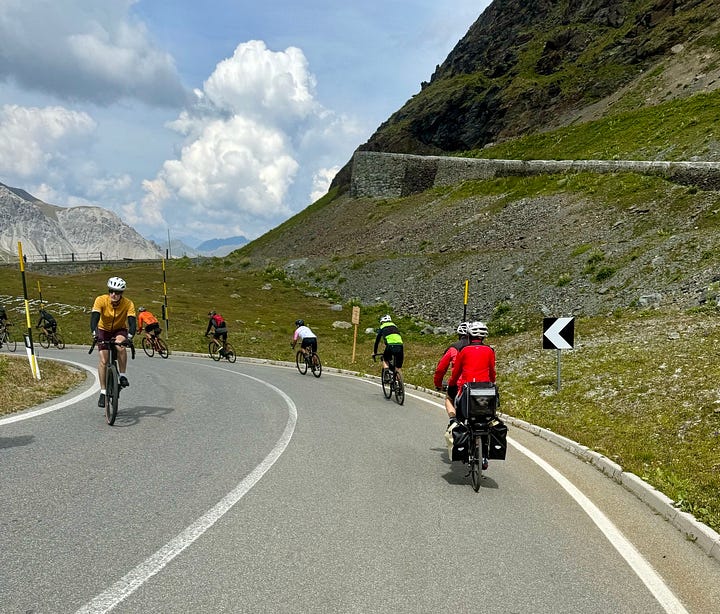
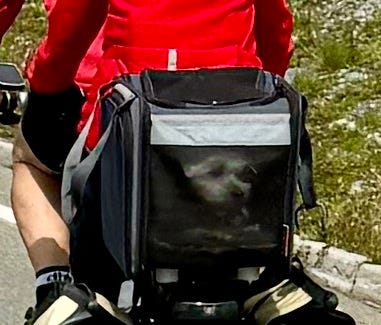
The climb back from Bormio? Awesome. With no motors around, the only sound was the rhythmic click of turning cranks and the labored breaths of those battling gravity. It was getting HOT—about 85°F (31°C)—and sweat dripped from every pore. The suffering was real. Yells and groans echoed down the valley like something out of a Roman gladiator arena. To make matters worse, cheerers kept shouting what sounded like “DIE! DIE! DIE!” - which, for a moment, was terrifying. Later, I learned it was “Dai, dai, dai,” Italian for “C’mon, c’mon, c’mon,” but still…yikes.
We crested the final turns, coming to a halt as the human traffic got too condensed to get to the top. The last few steps were a walk, but I didn’t mind. I had made it. The double Stelvio was complete. I grabbed a burger and sat with Daniel, an Austrian cyclist who had tackled the climb on a mountain bike. We shared war stories, our skinny and fat tires a reminder that we were all brothers and sisters on this day.
It was only noon, and I felt good. Should I find another mountain to climb? The thought crossed my mind. But then again, I was bruised, bleeding, and dark clouds loomed on the horizon. Better to head back through the Umbrail Pass and into Switzerland. The descent was just as spectacular, dropping us into Swiss farmland about 20 kilometers from where we started. I took it slow, stopping to greet every goat, cow, and alpaca that made eye contact.
Back in Glorenza, the town was hosting a beer fest to celebrate the day’s cyclists. Smiles and laughter filled the air. Whether you summited or not, it was an epic way to close out the summer. Tables overflowed with pear bread, fresh fruit spreads, Italian cured meats, and olives from the surrounding area. Italians, of course, know how to celebrate the good things. My cycling computer read 108 kilometers, 3,750 meters (12,000’) of climbing, and roughly six hours of riding. I wasted no time in eating my weight in pasta and rosti. Honestly, that might be the best reason to cycle all day in Italy and Switzerland.
As thunderclouds rolled in, bringing rain around 6 p.m., no one even blinked. The merriment continued unabated. Italy, with its chaotic beauty, reminded me that the greatest journeys aren’t about conquering mountains - they’re about discovering the joy in surrendering to something far larger than ourselves. And sometimes, that’s as simple as nature, new friends, and la dolce vita.
Quite simply, awesome.
Stelvio Day, people - highly recommended. And free!





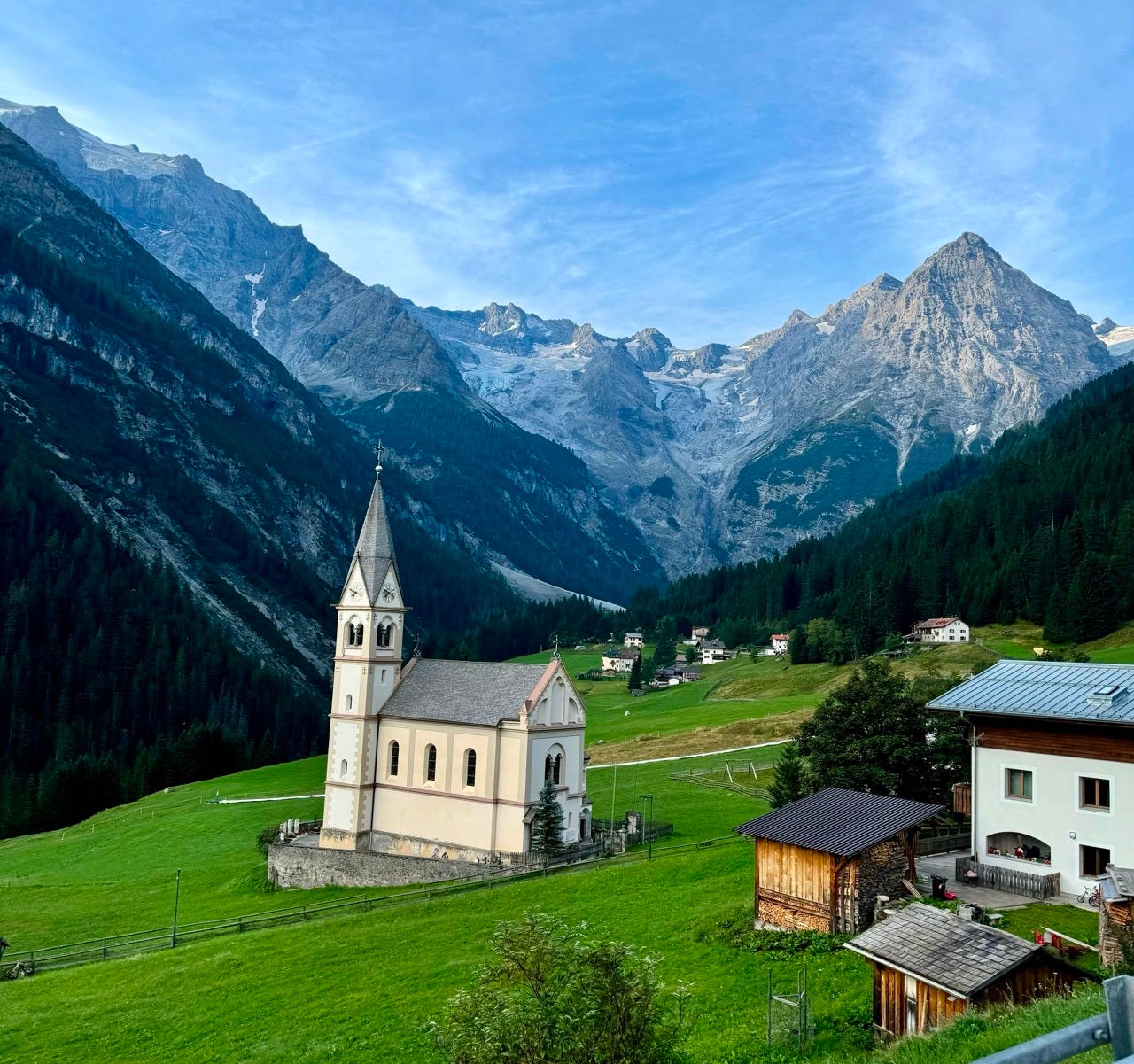
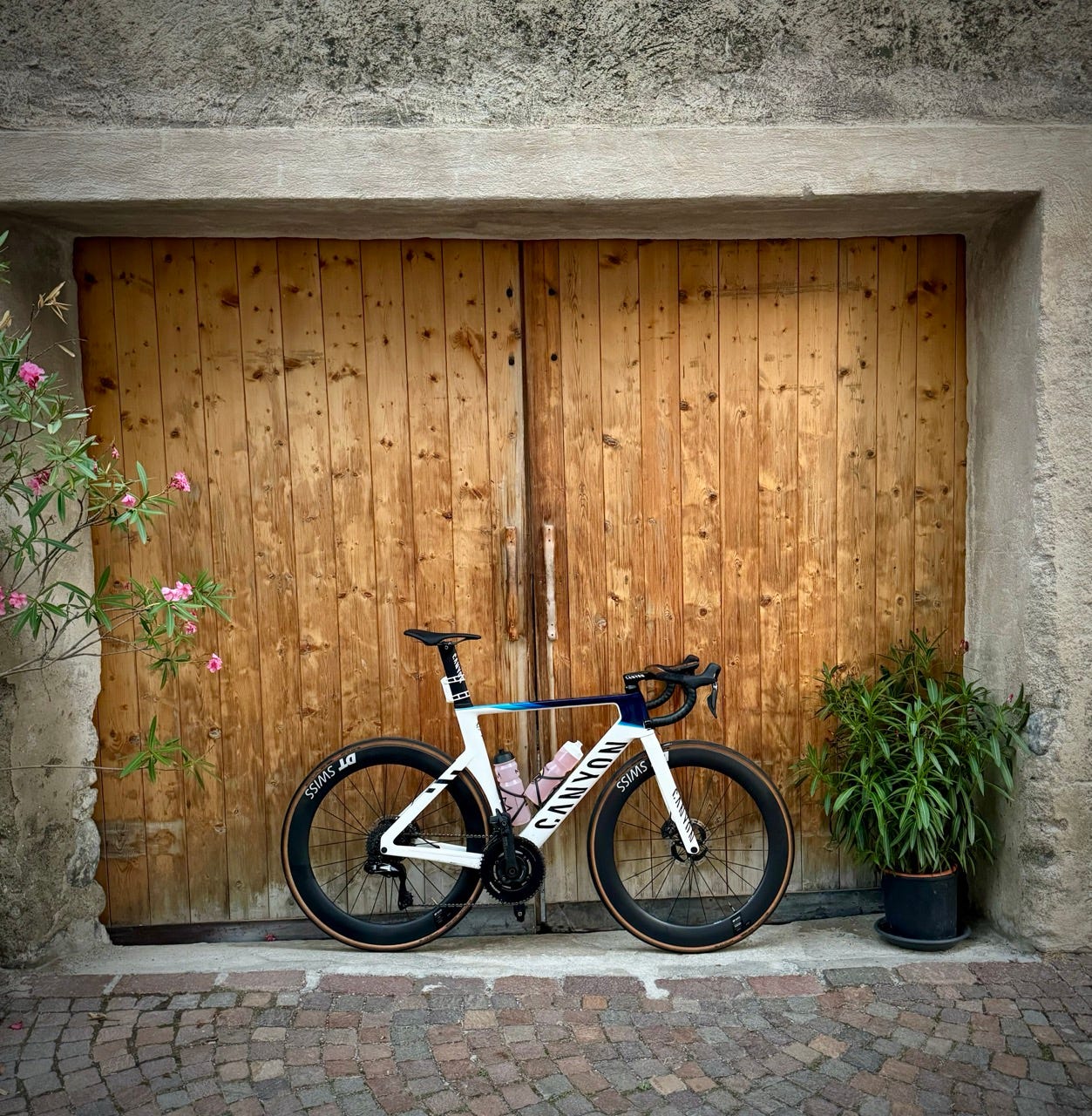
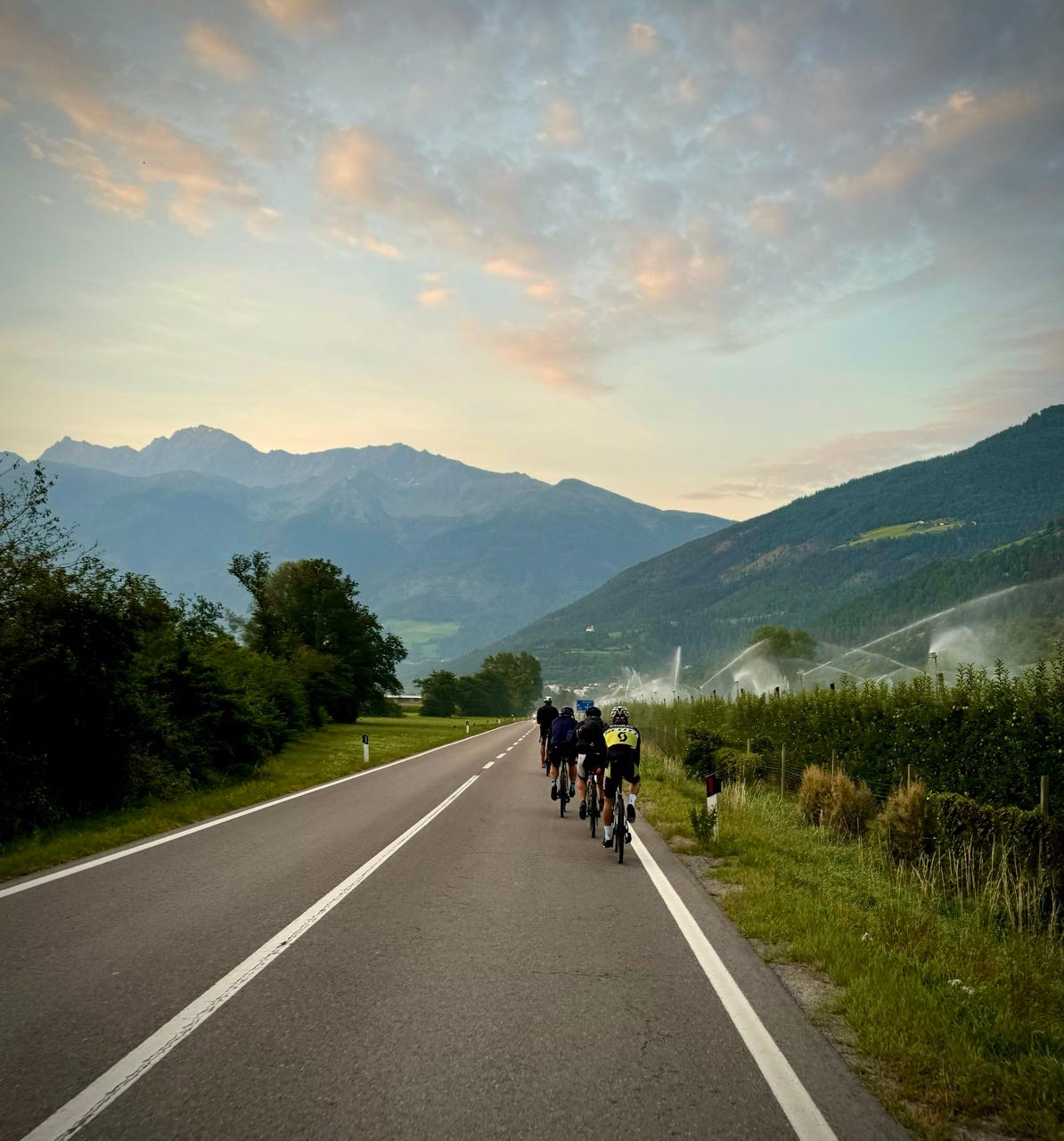
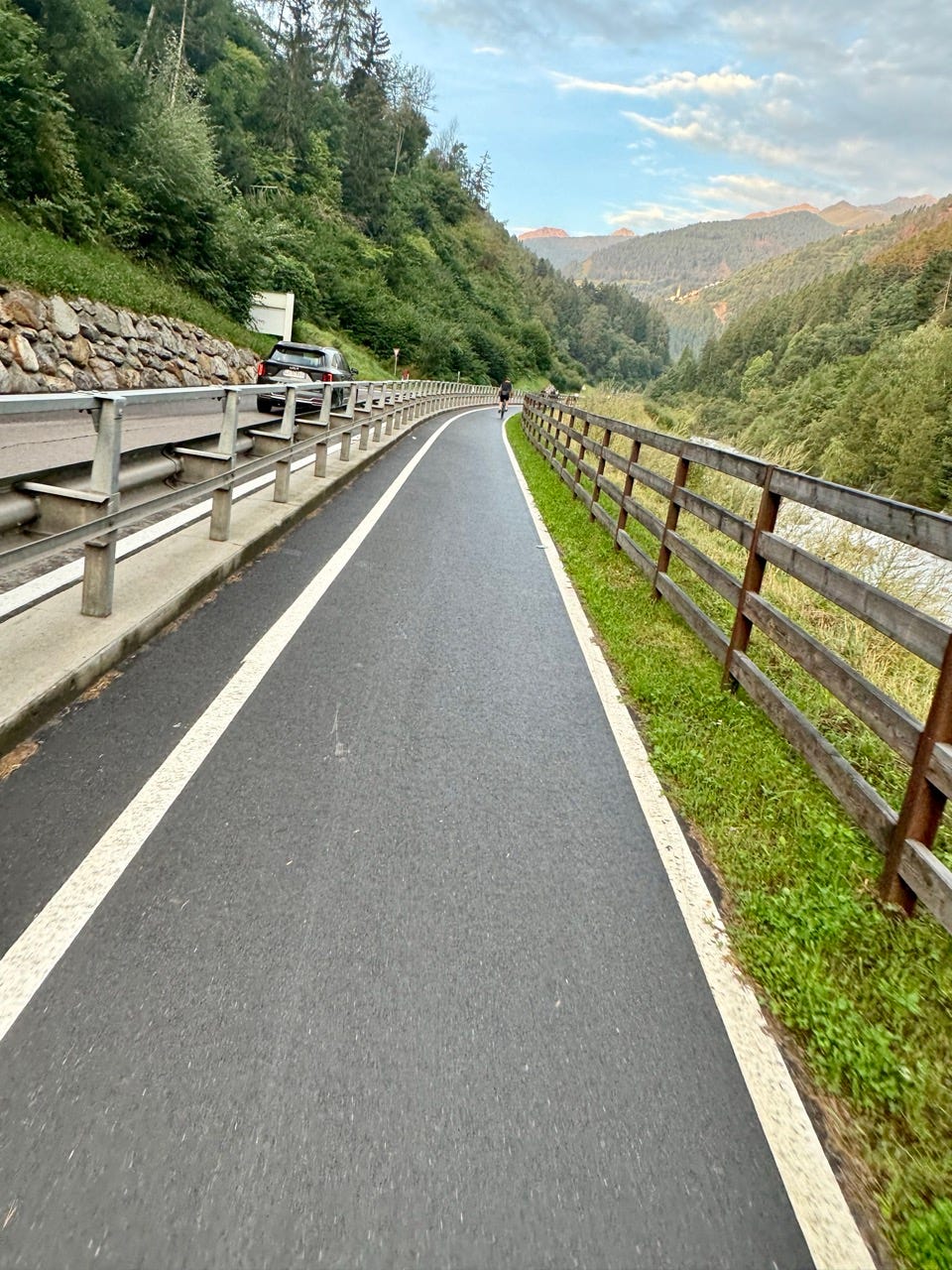
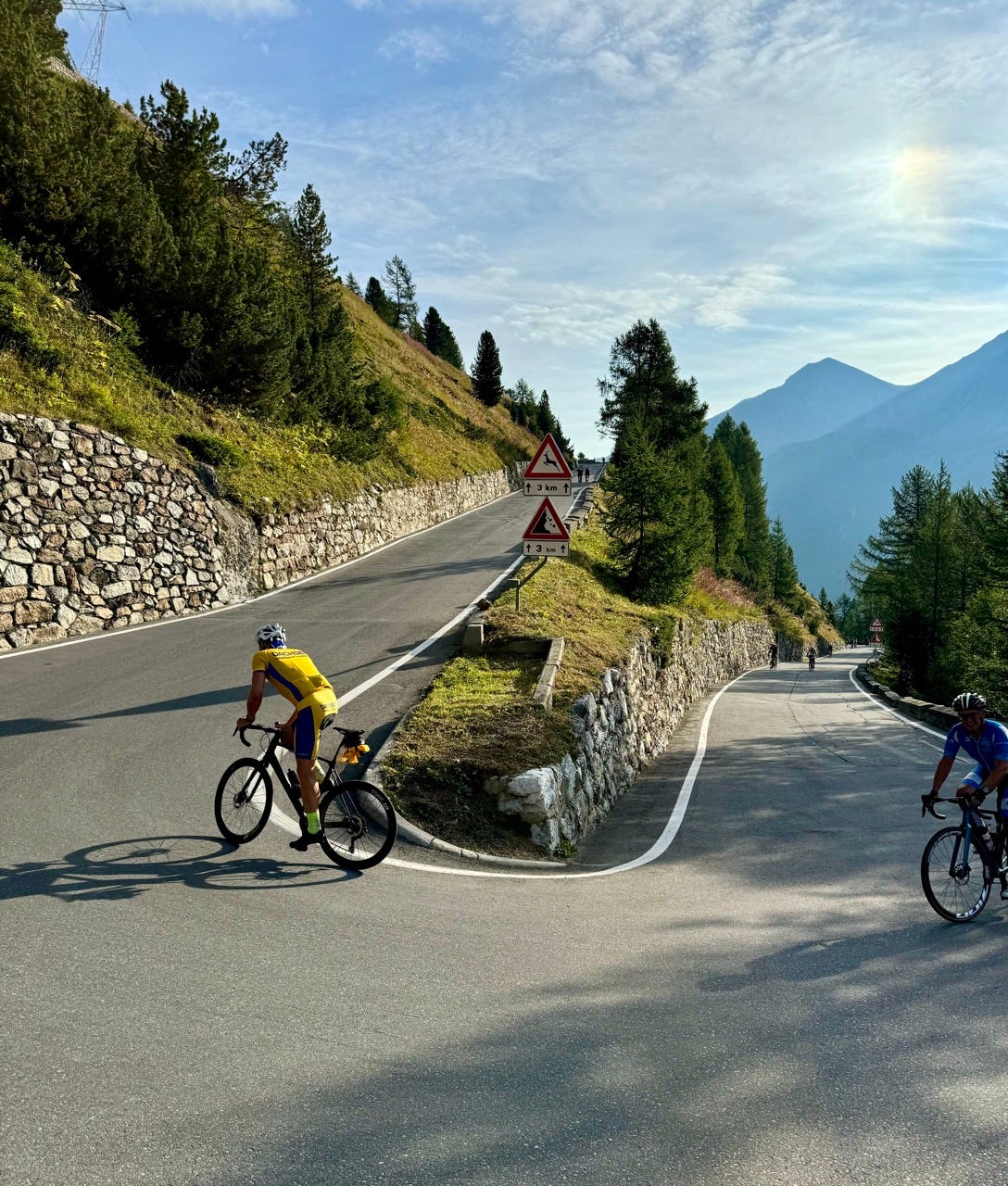
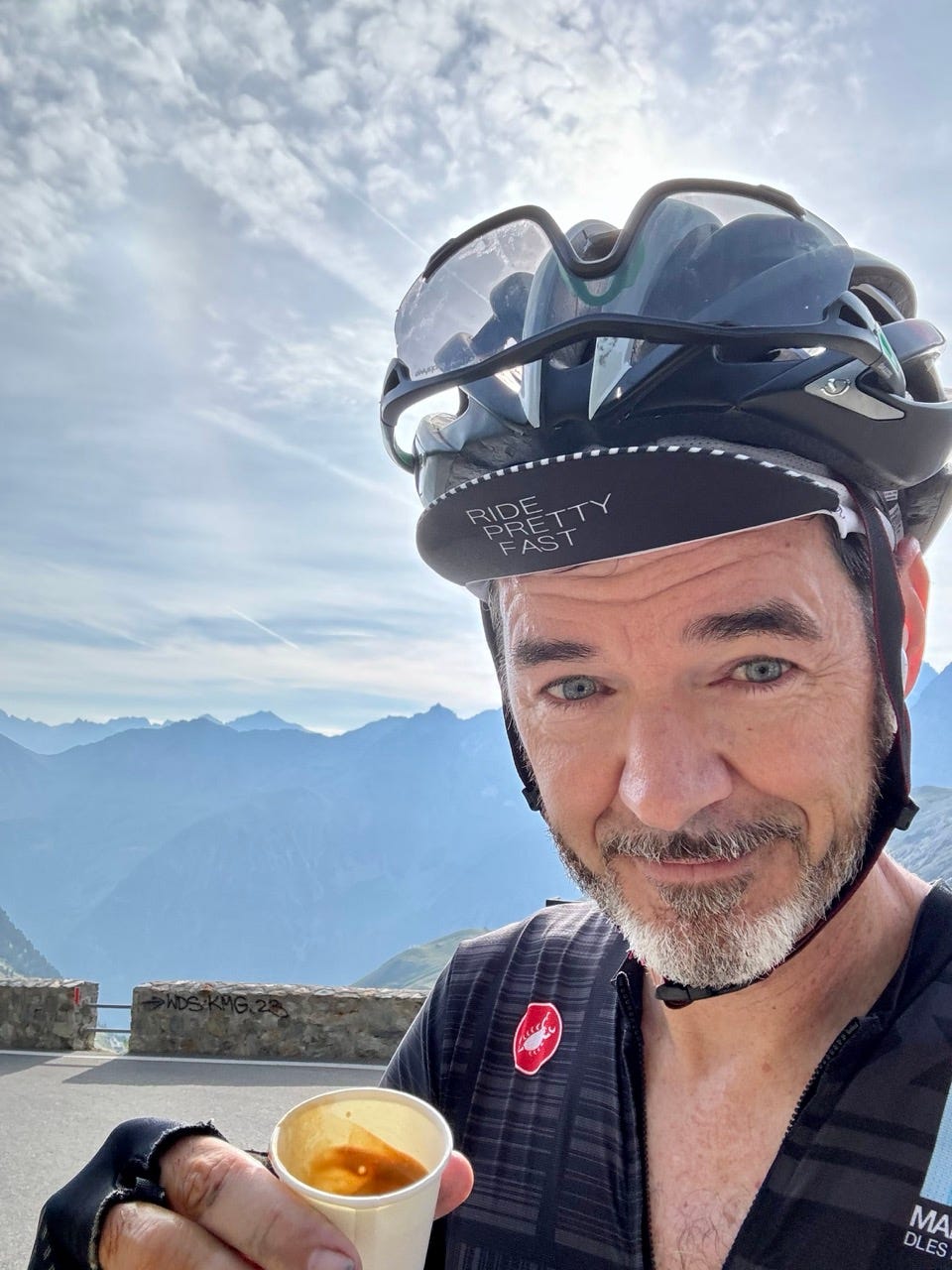
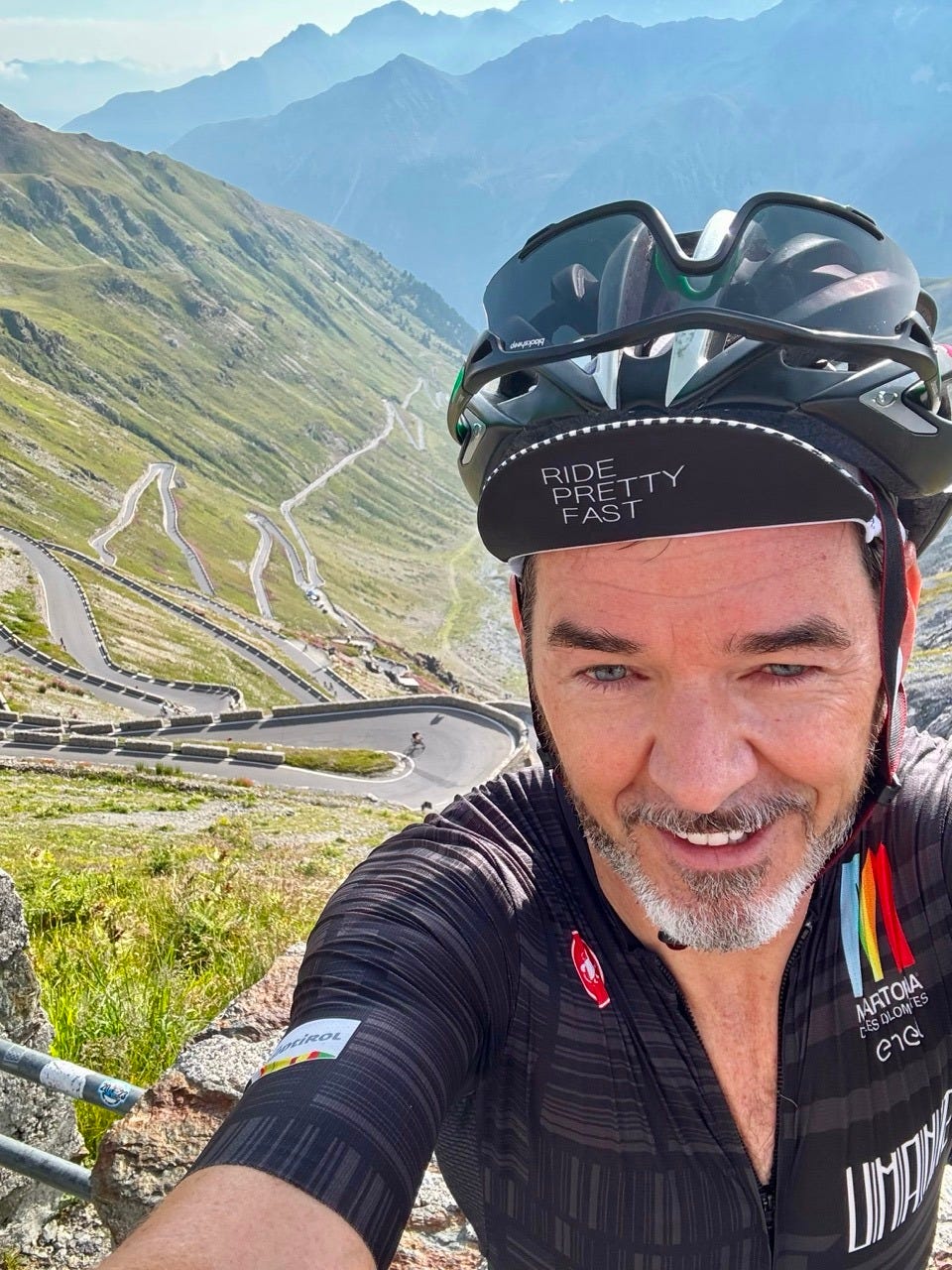
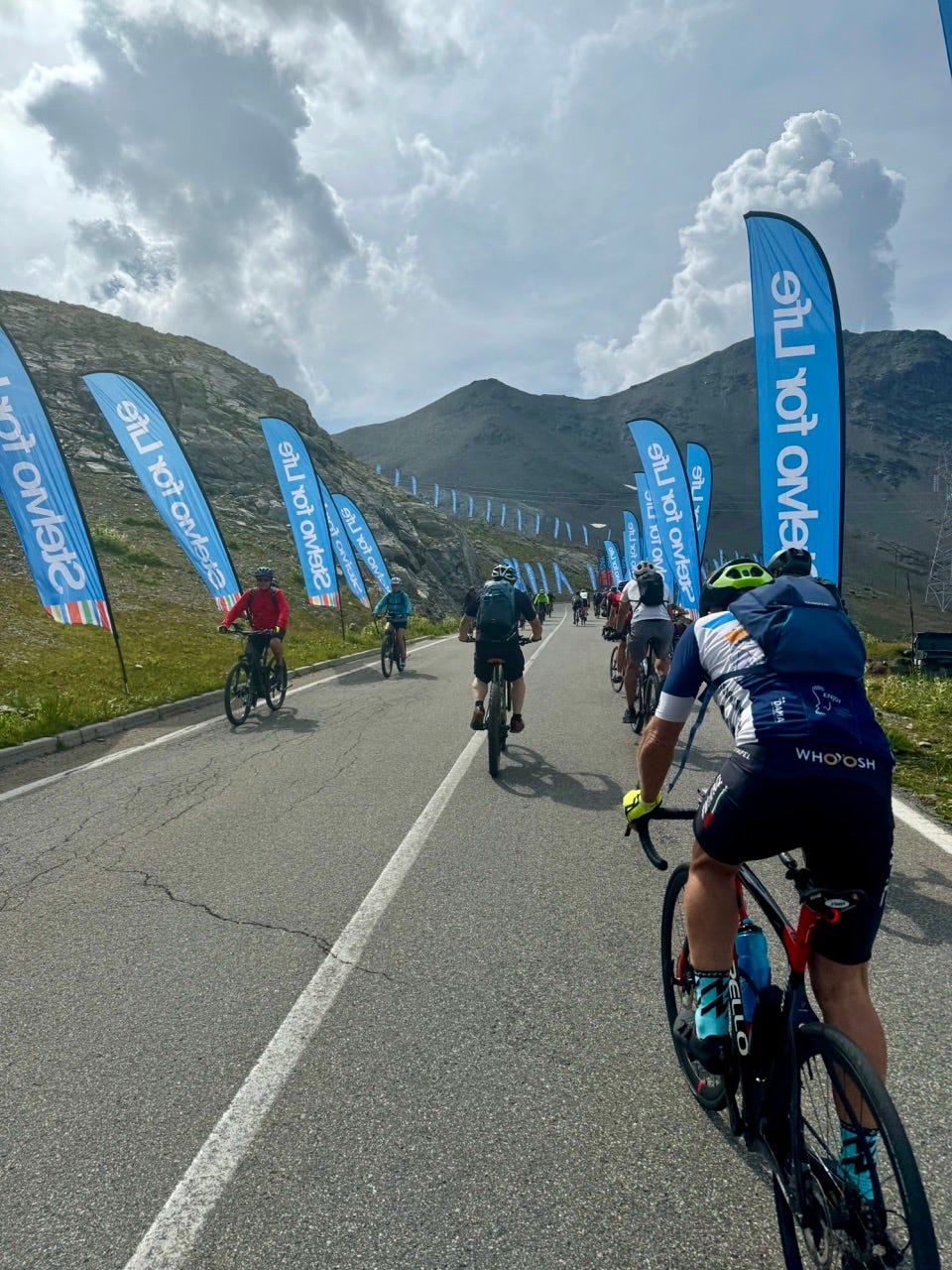
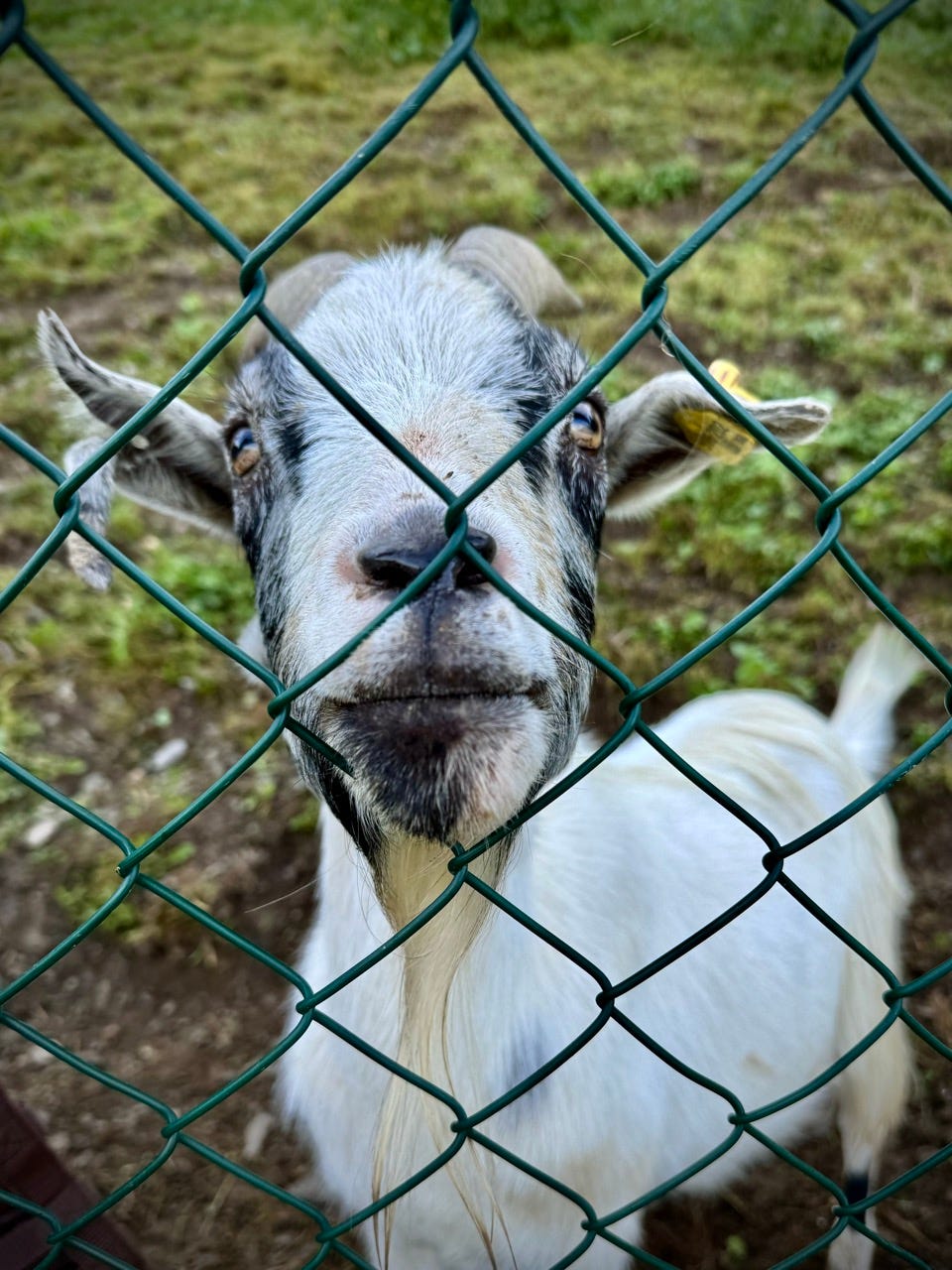
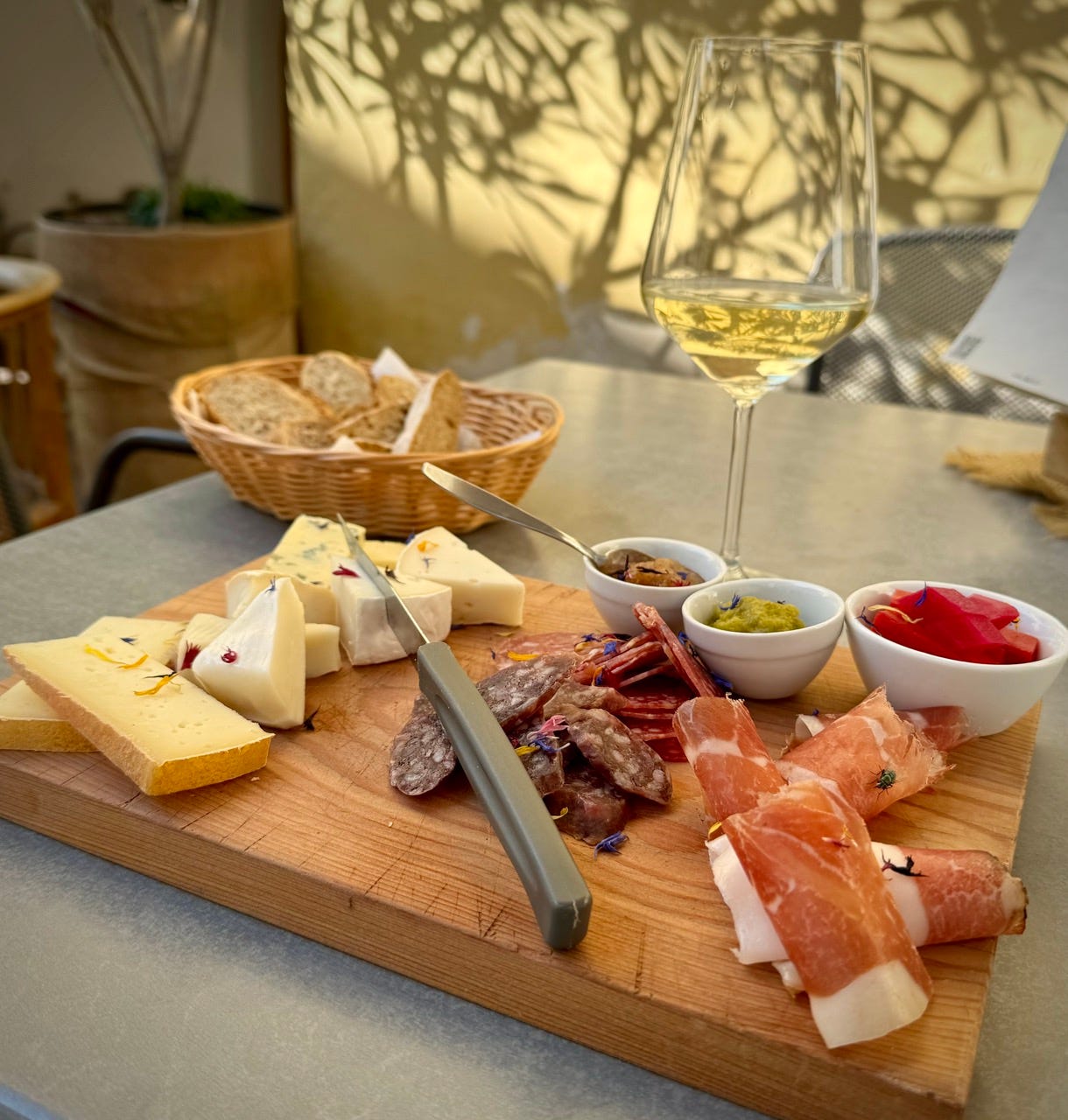
Love it.
Funny, this new ‘raw-dogging’ thing. Been my modus operandi for years. Once drove a 24’ u-haul from dc to sf alone with a broken radio. Three day raw dog. Beautiful.
Btw, have you done the death ride? I assume this is a greater challenge but would love to know the comparison.
Great read Scott....keep on 'doggin' it!